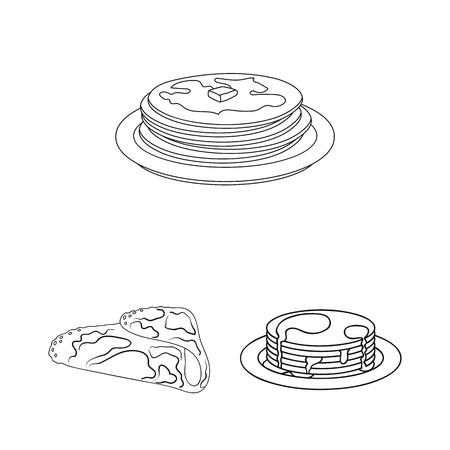1. Why Choose Homemade Pet Food?
More pet owners across America are making the switch to homemade pet food for their dogs and cats. But what’s behind this growing trend? Let’s take a closer look at the key benefits of preparing your furry friend’s meals at home.
Ingredient Control
When you make pet food at home, you know exactly what’s going into every meal. This means you can avoid fillers, artificial preservatives, by-products, and questionable ingredients that are often found in commercial pet foods. You have full control over the quality and source of proteins, grains, vegetables, and fats. Here’s a quick comparison:
| Commercial Pet Food | Homemade Pet Food | |
|---|---|---|
| Ingredients | May include by-products, fillers, additives | Fresh, whole ingredients you choose |
| Transparency | Limited; ingredient lists can be unclear | Total control; you see and select everything |
| Additives/Preservatives | Commonly used for shelf life | None needed if prepared fresh |
Potential Health Improvements
Many pet parents report that their pets experience better overall health with homemade diets. Freshly prepared meals can lead to shinier coats, more energy, improved digestion, and fewer allergies. Without unnecessary chemicals or excess salt and sugar, pets are less likely to develop certain health issues down the road.
Catering to Special Dietary Needs
If your dog or cat has food allergies, sensitivities, or special dietary requirements due to age or medical conditions, homemade food makes it much easier to adjust recipes accordingly. Whether you need grain-free options for an allergic pup or a higher-protein diet for an active cat, you can tailor every meal to your pet’s unique needs.
The Joy of Cooking for Your Best Friend
Preparing meals for your pet is also a fun way to bond and show them extra love. It gives peace of mind knowing you’re giving them safe, nourishing food made right in your own kitchen.
2. Nutritional Essentials for Dogs and Cats
Understanding Your Pet’s Nutritional Needs
When making homemade food for your pets, it’s important to know that dogs and cats have different nutritional requirements. Each species needs a balanced combination of proteins, fats, carbohydrates, vitamins, and minerals to stay healthy. Creating meals at home lets you control what goes into their food and use fresh, local ingredients, but you need to make sure their essential needs are met.
Key Nutrients for Dogs and Cats
| Nutrient | Dogs Need | Cats Need |
|---|---|---|
| Protein | High quality (chicken, beef, fish, eggs) | Very high; must come from animal sources (chicken, turkey, fish) |
| Fat | Moderate; supports energy and skin health (salmon oil, chicken fat) | Higher than dogs; essential fatty acids like arachidonic acid (found in animal fat) |
| Carbohydrates | Can digest grains and veggies (rice, sweet potatoes, carrots) | Minimal; obligate carnivores, small amounts only (pumpkin or peas) |
| Taurine | Can synthesize it themselves | Must get from diet; critical for heart and eye health (found in meat and fish) |
| Vitamins & Minerals | A balanced mix (calcium, phosphorus, vitamin A, D, E) | Specific needs (vitamin A from animal sources only) |
Differences Between Dog and Cat Diets
Cats are obligate carnivores—this means they rely on nutrients found only in animal tissue. They need more protein and certain amino acids like taurine that dogs don’t. Dogs are omnivores and can eat a wider variety of foods including grains and vegetables. Never feed cat food to dogs or vice versa for long periods because their diets are not interchangeable.
Tips for Creating Well-Balanced Homemade Meals
- Select lean proteins: Use locally sourced chicken breast, turkey, or beef for both dogs and cats. For cats especially, always include organ meats like liver occasionally.
- Add healthy fats: Drizzle meals with salmon oil or olive oil for shiny coats and brain health.
- Choose safe veggies: Carrots, green beans, pumpkin, and sweet potatoes work well for dogs. Use small amounts of pumpkin or peas for cats if needed.
- Include calcium: Crushed eggshells or plain yogurt can help meet calcium needs in homemade meals.
- Avoid toxic foods: Never use onions, garlic, grapes, raisins, chocolate, or artificial sweeteners like xylitol—they’re dangerous for pets.
- Consult your vet: Before switching to homemade diets long-term, talk to your veterinarian or a pet nutritionist to ensure your recipes meet all your pet’s needs.
Sourcing Ingredients Locally
You can find fresh meats at local farmers’ markets or butcher shops. Seasonal vegetables from nearby farms make great additions to dog meals. Buying local not only supports your community but also ensures you’re using fresher ingredients in your pet’s food.

3. Safe Ingredients and Common Foods to Avoid
When making homemade meals for your pets, choosing the right ingredients is essential for their health and safety. Here’s a guide to pet-friendly foods you likely have in your kitchen, along with a list of common foods that can be harmful or even dangerous to dogs and cats.
Pet-Friendly Foods You Can Use
The following ingredients are safe for most healthy dogs and cats and make great additions to homemade recipes:
| Ingredient | Notes |
|---|---|
| Chicken (cooked, boneless, skinless) | Lean protein source, easy to digest |
| Beef (lean, cooked) | Rich in protein and iron |
| Turkey (cooked, boneless, skinless) | Another lean protein option |
| Salmon (cooked, boneless) | Good source of Omega-3 fatty acids; avoid raw fish |
| Eggs (cooked) | Packed with protein and nutrients; never feed raw eggs |
| Carrots (chopped or shredded) | Low-calorie treat, high in fiber and vitamins |
| Pumpkin (plain, cooked or canned without sugar/spices) | Great for digestion and gentle on the stomach |
| Sweet Potatoes (cooked, unseasoned) | Rich in vitamins A and C; always cook first |
| Peeled Apples (no seeds or core) | Naturally sweet, good source of fiber |
| Green Beans (steamed or boiled) | Low-calorie veggie loaded with nutrients |
| Blueberries | Antioxidant-rich fruit; give in moderation |
| Oats (plain, cooked) | Mild whole grain for extra fiber; no sugar added |
| Cottage Cheese (low-fat, plain) | Dairy treat some pets tolerate well; offer in small amounts only if not lactose intolerant |
Dangerous Foods to Avoid in Homemade Pet Meals
Certain everyday foods found in American kitchens can be toxic or harmful to pets. Always keep these out of your homemade recipes:
| Avoid This Food | Dangers/Why It’s Unsafe |
|---|---|
| Onions & Garlic (all forms: raw, cooked, powdered) | Can cause anemia by damaging red blood cells in both dogs and cats. |
| Chocolate & Cocoa Products | Toxic due to theobromine; even small amounts can be deadly. |
| Grapes & Raisins | Can cause sudden kidney failure in dogs and possibly cats. |
| Xylitol (artificial sweetener found in gum, candy, baked goods) | Drops blood sugar rapidly; can cause seizures or liver failure. |
| Cooked Bones (especially chicken bones) | Easily splinter and may cause choking or internal injuries. |
| Avocado (flesh, pit, skin) | Contains persin which can cause vomiting or diarrhea. |
| Dairy Products (large amounts or full-fat cheeses/milk) | Many pets are lactose intolerant; causes upset stomach. |
| Nuts (macadamia nuts especially) | Toxic to dogs; causes weakness and tremors. |
| Salt & Salty Snacks (chips, pretzels, processed meats) | Can lead to sodium poisoning and dehydration. |
Quick Tips for Safer Homemade Pet Meals:
- Avoid using any seasoning blends—stick to plain ingredients.
- If you’re not sure about a food item, look it up or check with your veterinarian before feeding it to your pet.
- Introduce new foods slowly to watch for signs of allergies or tummy troubles.
- No matter how healthy an ingredient is for humans, always double-check its safety for pets.
- Cats have different nutritional needs than dogs—never feed cat food recipes to dogs or vice versa without consulting a vet.
Your pet’s health starts with what goes into their bowl! By choosing safe ingredients and steering clear of harmful ones, you’ll make mealtime both tasty and safe for your furry family members.
4. Easy and Healthy Homemade Recipes
Making your own pet food at home can be a fun and rewarding way to care for your furry friends. With just a few simple, wholesome ingredients, you can create meals that are both healthy and delicious for your dogs and cats. Below, you’ll find easy-to-follow recipes using familiar American staples like chicken, rice, pumpkin, and salmon—all vet-approved to ensure your pets get the nutrients they need.
Homemade Chicken & Rice Bowl for Dogs
- Ingredients: 1 cup cooked chicken breast (shredded), 1/2 cup cooked white or brown rice, 1/4 cup cooked carrots (chopped), 1 tablespoon plain pumpkin puree
- Instructions: Mix all ingredients in a bowl. Let cool before serving. Portion according to your dog’s weight and appetite.
Salmon & Pumpkin Delight for Cats
- Ingredients: 1/2 cup cooked salmon (flaked, bones removed), 2 tablespoons plain pumpkin puree, 1/4 cup cooked peas (mashed)
- Instructions: Combine the salmon, pumpkin, and peas in a bowl. Mix well and serve at room temperature. Perfect for an extra boost of omega-3s!
Quick Reference Table: Dog & Cat Meal Ideas
| Recipe Name | Main Ingredients | Best For |
|---|---|---|
| Chicken & Rice Bowl (Dog) | Chicken, rice, carrots, pumpkin | Digestive health and energy |
| Salmon & Pumpkin Delight (Cat) | Salmon, pumpkin, peas | Skin and coat health |
| Pumpkin Rice Mix (Dog/Cat) | Pumpkin, rice, turkey or chicken | Sensitive stomachs |
| Egg & Veggie Scramble (Dog/Cat) | Eggs, spinach, sweet potato | Protein variety and vitamins |
Nutritional Tips from U.S. Vets
- Avoid using onions, garlic, or added salt—these can be harmful to pets.
- If adding oils, use small amounts of olive oil or salmon oil for a healthy shine on coats.
- Always check with your veterinarian before introducing new foods to your pet’s diet.
- Keep portions appropriate to prevent overfeeding.
Your Pets Will Love Homemade!
With these simple recipes using everyday ingredients found in most American kitchens, you can give your pets nutritious meals made with love. Not only do these dishes support their overall health, but they’re also tasty enough to have your four-legged family members looking forward to mealtime every day!
5. Serving, Storage, and Transitioning Tips
Serving Homemade Pet Food: Finding the Right Amount
When serving homemade meals to your dog or cat, portion control is key to keeping them healthy. The right amount depends on their age, weight, activity level, and health needs. Here’s a simple guide to help you estimate how much to feed your pet:
| Pet Type | Weight (lbs) | Daily Serving Size |
|---|---|---|
| Dog (Adult) | 10 | 3/4 – 1 cup |
| Dog (Adult) | 25 | 1 1/2 – 2 cups |
| Dog (Adult) | 50 | 2 1/2 – 3 cups |
| Cat (Adult) | 8-10 | 1/2 – 2/3 cup |
*Always check with your vet for personalized advice based on your pet’s unique needs.
Safe Storage Methods for Homemade Pet Food
Homemade pet food doesn’t have preservatives like commercial brands, so proper storage is important to keep it fresh and safe. Here are some easy tips:
- Refrigerate: Store leftovers in airtight containers in the fridge for up to 3 days.
- Freeze: For larger batches, freeze portions in freezer-safe containers or bags for up to 2 months.
- Label & Date: Always label and date containers so you know when they were made.
- Avoid Leaving Out: Don’t leave homemade food at room temperature for more than 2 hours.
Smoothly Transitioning Your Pet from Commercial to Homemade Diets
Pets’ stomachs can be sensitive to sudden changes. To avoid digestive upset, gradually mix homemade food with their regular food over a week or more. Use this sample transition plan:
| Days | % Old Food | % Homemade Food |
|---|---|---|
| Day 1-2 | 75% | 25% |
| Day 3-4 | 50% | 50% |
| Day 5-6 | 25% | 75% |
| Day 7+ | 0% | 100% |
Monitor Your Pet’s Health During the Switch
Watch for any signs of tummy trouble like vomiting, diarrhea, or loss of appetite. If anything seems off, slow down the transition and talk to your vet. Also, keep an eye on their weight and energy levels—healthy pets should stay active and maintain a steady weight with shiny coats and bright eyes.
A Few More Tips:
- If you have multiple pets, monitor each one separately as individual needs can differ.
- If your pet has any health issues or food allergies, consult your veterinarian before making diet changes.
Your commitment to making nutritious meals at home helps ensure your furry family members stay happy and healthy!

